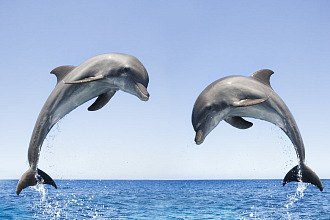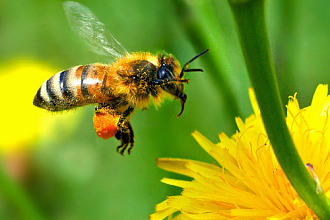It is not simply that the wood frog can survive for months, hibernating in temperatures that get down to minus 80° F that makes it so special. It is also the not-by-accident way it happens and how long it goes on with no ill effects that intrigues researchers!
These small creatures (about 11/2" to 3" long) have (not by accident) built into their bodies a seemingly instantaneous signal sent to its liver, when first its abdomen is filled by ice when the temperature drops. Instead of ice pulling the moisture out of the cells, the ice encases the internal organs of the frog, between its layers of skin and muscles. But within the cells and the organs of its body, this little frog's liver has instantly begun flushing 100 times the amount of glucose as it does normally. Almost immediately, the cells and organs are filled with that syrupy substance that supports the cell walls (which would otherwise collapse due to dehydration.) The frog goes into what some researchers have called a "miraculous" condition of "suspended animation" with its heart ceasing to beat (thus ceasing to pump blood), the lungs ceasing to breathe, the muscles having no movement—and the frog becomes (not by accident) as though frozen like a stone or ice carving. Along with that a noticeable change to white takes place as the color of the quickly-frozen lens of its eyes. BUT not by accident, with the Creator's hand at the helm, while the liquid outside the cells and organs is frozen, inside those same organs and inside the cell walls themselves, the sugary substance (made of the same glucose as exists in the human body and every other vertebrate), because of its suddenly high concentration in the wood frog has become like anti-freeze to the little frog's body. Thus freezing cannot touch those vital organs or cells. But the triggering of the liver to such a sudden production and distribution process baffles researchers, who have called aspects of the process "amazing," "quite extraordinary,"and even "miraculous!'
Currently, researchers study the not-by-accident little amphibian's "adaptive mechanism," attempting to discover new and better ways of preserving human donor hearts and lungs for transplant assistance. For example, the best human preservation technologies today provide a donated heart or lungs a maximum time limit of just under 12 hours for purposes of viable transplants. But if researchers could decipher the Wood Frog's anti-freeze process, these same organs would remain transplant ready for months. We wish the researching scientists well, while we know that the "frog's adaptive mechanism" is another way of referring to the Creator's unique designs which am certain He'll share with us all one day soon—and lots more!!
Others have declared they would love to uncover how the "mechanism" of the frog re-starts the heart when it has stopped beating/pumping blood for literally months without being operational, especially when no outside impulse is evident that triggers the re-initiation of heart beats that begin within the frog! There is literally no indicator outside the heart itself that would seem to impel its life-force to again go into action. So, for whatever the cause, the frog's heart begins to pump about 20 minutes before the little creature takes its first gulp of air followed in sequence by its muscles relaxing from their position as "set in stone." All told, in less than an hour, the frog, who is evidently none the worse for the months of suspended animation, will leap up, ready to explore its world, and find just the mate it needs to begin another family—in a spot near some barely melting water, where the female will soon lay about a thousand eggs at a time before she goes on with her other activities.
I not only believe, but I know that God has any kind of Creative and re-Creative power He wants to call upon at any time. He has promised He will do exactly that for all who choose not only to believe His word but trust His saving grace to restore us.
More importantly GOD is alive! He will return and we'll witness thousands of such stories—ALL NOT BY ACCIDENT!
Picture originally found here


























